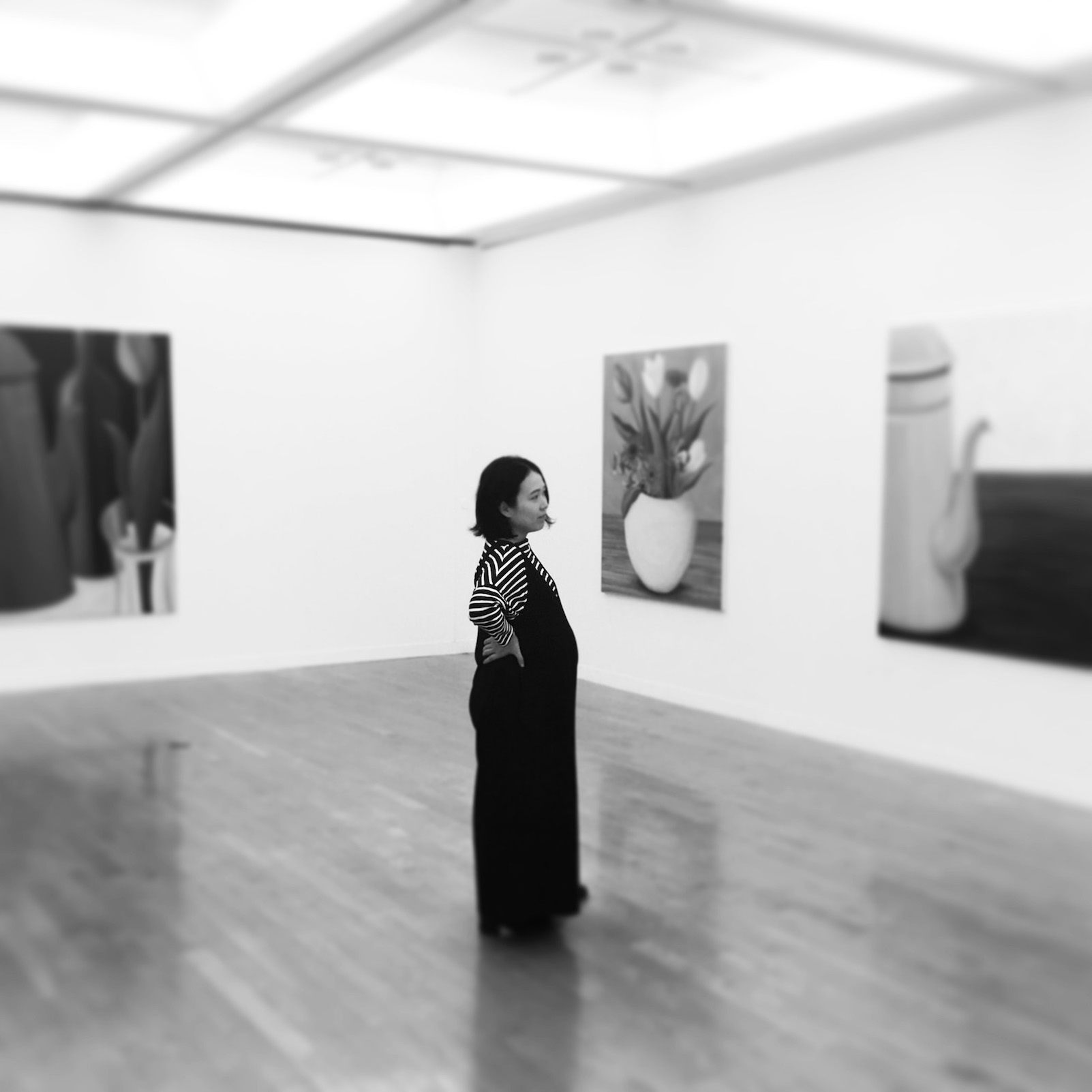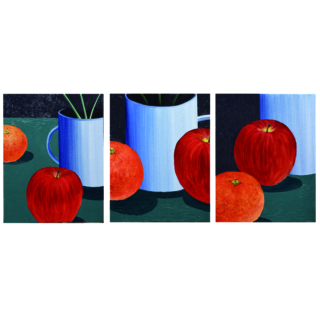色々な場所にあるりんごとみかんApples and Oranges in various places
作家詳細Details
Details
「ダムや風景、近年では静物をモチーフとした絵画作品を制作。人が物を見ていかに空間を感じるかということに関心があり、構図やタッチ絵の具の重ね方や色彩など、絵画の基本的要素を用いてそれを表現している。」
「Yokono creates paintings that take dams, landscapes, and, in recent years, still objects as motifs. She is interested in how people sense space when looking at things and expresses this using basic elements of painting, such as composition, the layering of tactile pigments, and coloring.」

横野 明日香
Asuka Yokono
1987年 愛知生まれ
2013年 愛知県立芸術大学大学院美術研究科博士前期課程油画・版画領域修了
2016年「現代美術の展望 - 新しい平面の作家たちvoca 2016」、上野の森美術館、東京
2018年「不自由なしかく」、GALLERY ZERO、大阪
2018年「組み合わせ」、See Saw gallery+hibit、愛知県
2019年「瀬戸現代美術展」、瀬戸サイト、愛知県
2019年「あざみ野コンテンポラリーvol.10 ・しかくのなかのリアリティ」、横浜市民ギャラリーあざみ野、神奈川県
1987 Born in Aichi
2013 M.F.A. Oil Painting and Woodcut Printing, Graduate School of Fine Arts,Aichi University of Fine Arts
2016 “THE VISION OF CONTEMPORARY ART 2016”, The Ueno Royal Museum (Tokyo, Japan)
2018 “Inconvenient sight”, GALLEEY ZERO(Osaka, Japan)
2018 “combination”, See Saw gallery+hibit(Aichi, Japan)
2019 “SETO Contemporary Art Exhibition”, Seto Site Building(Aichi, Japan)
2019 “Azamino Contemporary Vol.10 Reality in a Square”, Yokohana Civic Art Gallery Azamino(Kanagawa, Japan)
推薦者
Selector
愛知県美術館 学芸員
Curator, Aichi Prefectural Museum of Art










[推薦者コメント]
[Comment by Selector]
横野明日香(1987-)は力強いストロークで知られる画家です。描かれるものは、ダムなどの巨大な公共建築物から、ポットや花瓶といった身近な日用品まで幅広いですが、堅牢で静謐な世界観が共通しています。最近は、阿蘇山といった具体的なモチーフを選択し、さらに彼女の代名詞である大胆なストロークとは異なるポツポツとした描き方を取り入れています。これらスマートとは言い難い手続きをあえて取ることで、作品は良い意味での飲み込みにくさを帯びています。それを飲み込もうとする過程で、山あるいは風景に人がどのような眼差しを注いできたかをも意識させられます。
Asuka Yokono (1987–) is a painter known for her powerful brushstrokes. She paints a wide variety of things, from huge public structures such as dams to household items such as kettles and vases. However, in every work of hers a solid, tranquil view of the world exists. Recently, Yokono has been choosing to use as motifs real things, such as Mount Aso. In addition, she has been incorporating into her works short, dainty brushmarks, which are different from her signature bold brushstrokes. These new elements and techniques are not sleek and sophisticated. Yet, they give her works a difficulty, and it is a good difficulty. As we try to understand the works, we become aware of the ways people have been looking at mountains and landscapes.